We often have customers inquiring about the specs they need to build a security system server for their home or business office. We thought it would be helpful to summarize the advantages and the software and hardware you need to build a security system with a refurbished server.
Advantages of Having a Physical Box Over a Security Cloud Subscription
With the proliferation of The Cloud, there are several security systems services that manage and store the footage remotely. While these remote systems certainly have their advantages of convenience, there are some significant caveats to be aware of:
- There are compounding subscription costs. There is a reason the subscription model is now the pricing model of choice for so many software products – those subscription fees add up! While there is an upfront cost to set up your security server (and that cost is significantly smaller if you go the refurbished route), there are no perpetual recurring costs once you are up and running.
- Many security camera Cloud services have hidden or surprise fees. Want to download a particular clip? Sure, pay up!
- There is a greater risk of your footage being exposed. Unfortunately, hacks are part of our modern digital society – and cameras are an especially ripe target for hackers. Cloud providers store your footage on their servers. If their servers get hacked, your home footage is compromised (which could be disturbing when you consider your camera was recording your living room!).
The overwhelming advantages of housing your security system server are cost, security, and control.
What You'll Need: Software & Hardware
Software - Video Management Software (VDS)
Your security server will require specific software known as Video Management Software (or VDS). VDS allows you to manage the cameras, record and retrieve video, and monitor alarms. There are several tools in the marketplace – which one is right for you depends on your needs. Some considerations are the number of cameras in your system and your budget (some have pricing tiers that depend on how many cameras you use, your need for video editing, etc.).
Hardware – Network Switch & Cameras
In addition to the server (more on that below!), you'll need a network switch with adequate speed for transferring video (this is especially true if you are looking to have higher resolution footage). If you plan to use wired cameras, you'll also want to make sure the switch is PoE (Power over Ethernet). PoE will allow the cameras to be powered through its network connection without needing an additional, dedicated power source.
Which cameras you decide on depend on several factors:
- Indoor vs. Outdoor. Outdoor cameras are on the pricier side due to their weather-resistant casing.
- Wired vs. Wireless. Wired cameras (see the aforementioned PoE) can be powered through the network cable and never need new batteries. Wireless cameras can be much easier to install since you don't have to worry about running wires. However, you have to consider replacing the batteries (some outdoor cameras have the clever design of coming with solar panels that power the camera – just make sure it's in the sunlight!). You'll also need a wireless access point to connect the wireless cameras to your LAN.
- What features are important to you? Night vision? Zoom? Motion-detection? Audio-capable? Give it some thought about what exactly you want the cameras, and system, to be capable of before you pull the trigger.
Server
Now we get to the heart of your security system. Note: this server would be ideal for a seven-camera system, but you could adjust the specs accordingly depending on your requirements.
A quick rundown:
- Processors. Speed matters more than cores for video.
- RAM. 64GB of RAM should be sufficient. If you plan to use cameras that record in 1080P or above, you may want to increase the RAM.
- Storage. 6TB of storage should be sufficient (although with a RAID10 configuration, this total volume would be 3TB; see below). You can always increase (or decrease) the storage depending on the quality of the video, i.e., how long you want to store the footage and the number of cameras in your system. We've selected SAS drives due to their lower MTBF and 12gbps transfer speeds.
- We've selected Dual Power Supplies for redundancy and a RAID controller with a higher cache for handling video footage. As for RAID, we would suggest RAID10 for speed and mirroring.
Final Thoughts
While there are Cloud solutions and DVR boxes out there, a refurbished server gives you tremendous flexibility in creating the exact specs you need for a security system at an affordable price while maintaining control.
Do you have more questions on building and setting up a server for a security system? Shoot us an email at info@techmikeny.com, and one of our reps will happily work with you!







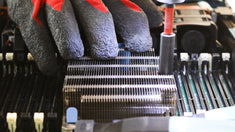
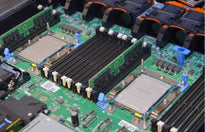
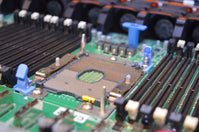
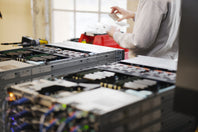
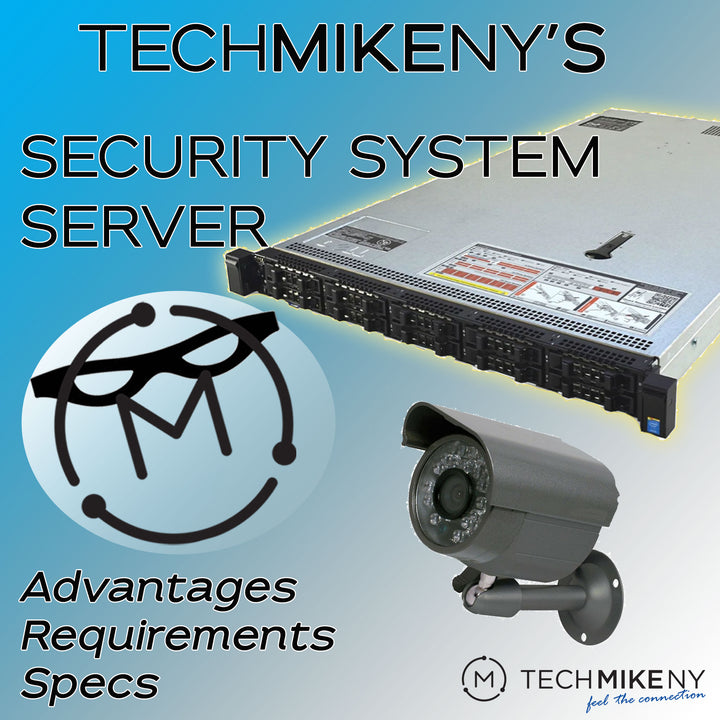


7 comments
Interesting configuration although the issue that I have trouble dealing with is that I have a good number (10) of old style analog (coax) cameras which work great but for a configuration such as you have put together to work for me I would have to have some type of interface that would accept at least 10 of these hard wired cameras but still provide the capability to allow me to have 8 (currently) IP cameras. Note that almost all of my cameras are at least 2k and most are 4k.
Any thoughts on hardware that can be added to the server you spec’ed out above that could also handle analog cameras?
Sincerely
Jerry
6TB is nothing. Most of my NDR need at least 10TB for 8 cameras. Also, if you want to work right, I suggest using WD Purple Hard Drives. https://www.westerndigital.com/products/internal-drives/wd-purple-sata-hdd#calculator this page has Calculator Storage link on the page.